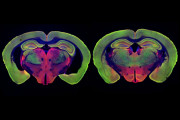 2019-05-13
2019-05-13
MIT researchers have unveiled a study in 2016 that exposure to LED flickering light with a specific frequency could reduce the amyloid plaques seen in mice with Alzheimer’s disease. The team recently published a new study which explains the effect of the light therapy at cell level.
The new study, published in Neuron on May 7, found that this light treatment has widespread effects at the cellular level, helping not just neurons but also immune cells called microglia. Overall, these effects reduce inflammation, enhance synaptic function, and protect against cell death, in ...
Continue reading →
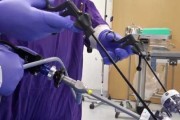 2015-11-09
2015-11-09
Laparoscopic cholecystectomy is a minimally invasive procedure for gallbladder removal, and one of the most common surgical procedures worldwide. While the procedure has a very high success rate, 1 in 200 patients will sustain serious bile duct injury, primarily due to misidentification of the biliary anatomy. With 800,000 procedures carried out in the United States each year that means in the U.S. alone 4,000 patients will be seriously injured.
Continue reading →
 2015-09-08
2015-09-08
New research may help explain why drug treatments for addiction and depression don’t work for some patients.
Continue reading →
 2014-10-22
2014-10-22
Scientists have created a drug for type 2 diabetes that is switched on by blue light, which they hope will improve treatment of the disease.
Continue reading →
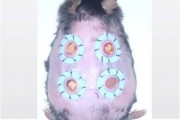 2014-09-04
2014-09-04
A research team from Osaka City University in Japan have succeeded in treating skin ulcers caused by antibiotic resistant bacteria using 5-aminolevulinic acid (ALA) and LED lights, according to a Nikkei Technology report.
Continue reading →
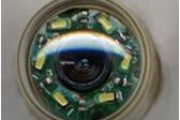 2014-02-28
2014-02-28
It was 1950 when Mr. Hopkins met Dr. Hugh Gainsborough, a gatroentreroligst at St. George’s Hospital London, where he was put forth with a challenge of illumination while operating within abdomen. By 1954, Hopkins invented flexible glass rods which transmitted light from external light source to the inspecting tissue residing within the body of patient, which came to be known as rod lens system. Concurrently early 1950 saw the birth of fibre optic light transmitting system which revolutionized the field of communication.
Continue reading →
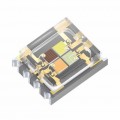 2013-11-20
2013-11-20
When it launches the new Osram Ostar Medical, Osram Opto Semiconductors will be introducing the first LED component with a high color-rendering index (CRI) of 95 and the possibility of adjusting the temperature of the color white. This makes it ideal for medical applications – for instance in operating rooms, where a precisely controlled chromaticity coordinate and high natural color rendering are crucial.
Continue reading →
2008-08-19
Recently, Alpha-One Electronics has introduced high reliability LEDs with special peak-wavelength which is suitable for a light source for medical instruments. LED with λP 700nm~810nm are quite important to detect the components of body, such as iris recognition, vein authentication, projection to scan the body, analyzer of the body fluid including blood components.
Continue reading →
 2019-05-13
2019-05-13
 2015-11-09
2015-11-09
 2015-09-08
2015-09-08
 2014-10-22
2014-10-22
 2014-09-04
2014-09-04
 2014-02-28
2014-02-28
 2013-11-20
2013-11-20